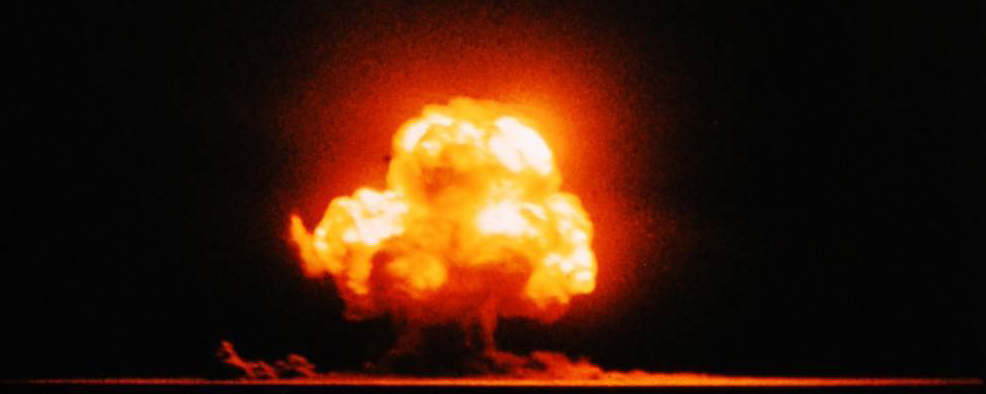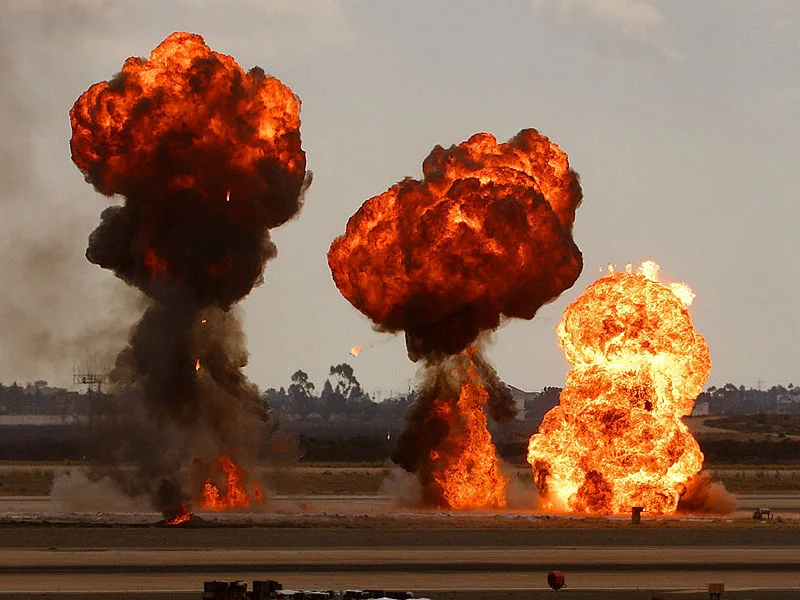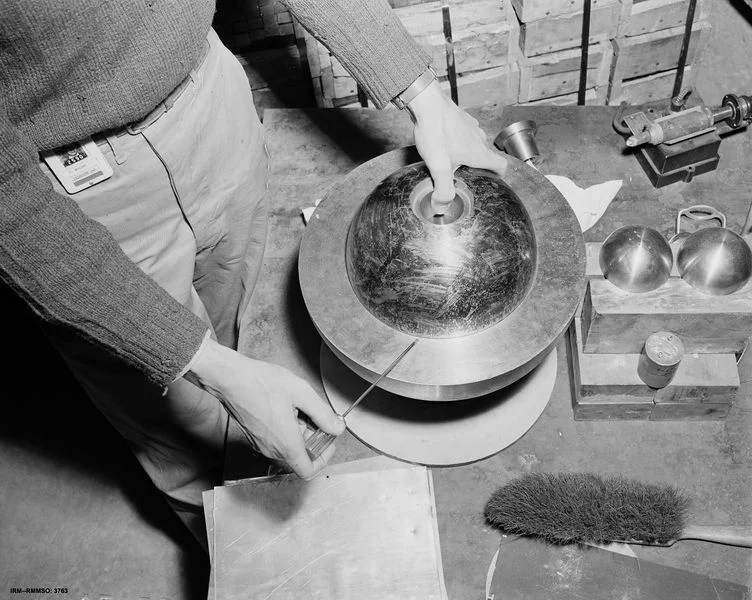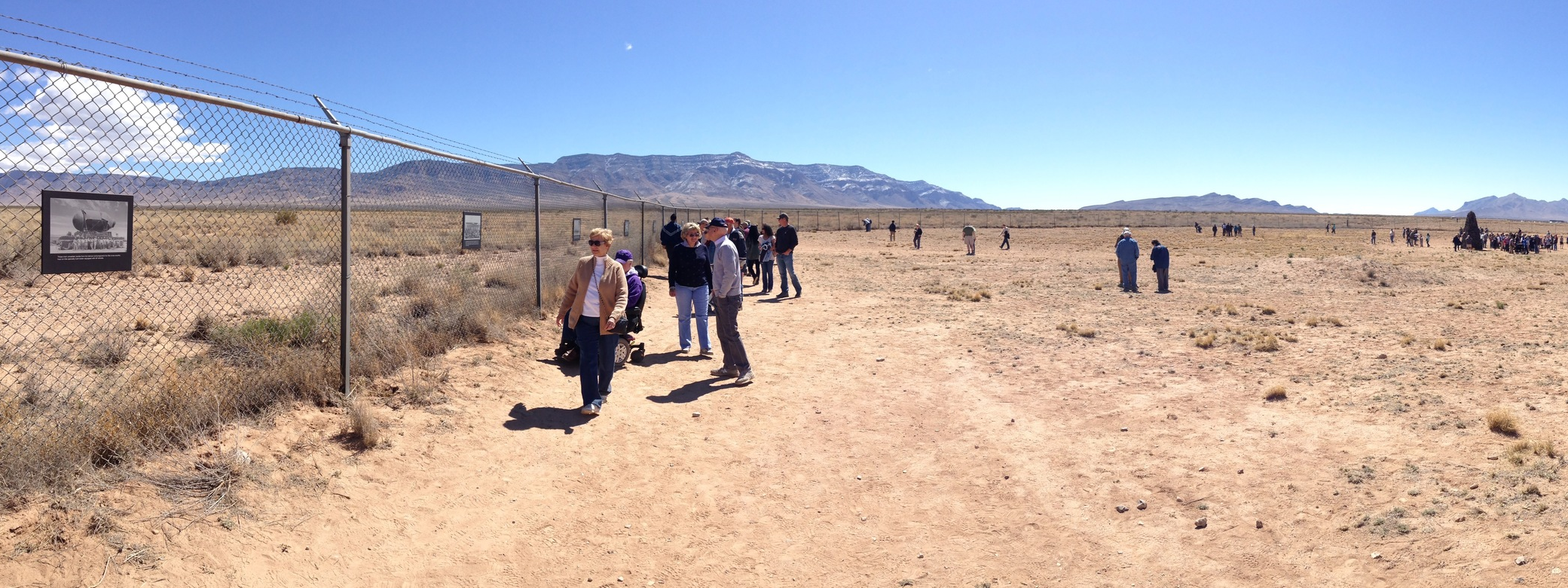Great Balls of Fire
/Photos from the first nine seconds following the Trinity detonation, arranged to scale
Seventy-one years ago the night sky of southern New Mexico was suddenly illuminated by a blast the likes of which the world had never witnessed. In just a few microseconds, a 13.6-pound sphere of plutonium went critical, unleashing the energy of 19 kilotons of TNT.
The shockwave rippled outward at the speed of sound, blowing out windows over a hundred miles away; observers ten miles from ground zero described being bathed in an oven-like heat. Soon a mushroom cloud seven miles tall began drifting eastward with the wind. Months later, fallout would be discovered in Indiana rivers 1,300 miles away when the Kodak Company observed that their cardboard packaging was emitting radiation that fogged the pristine film it was supposed to protect.
This was Trinity, the code-name for the culmination of the Manhattan Project. The U.S. government feared Nazis were developing a nuclear bomb of their own using uranium ore from annexed Czechoslovakia, and the race was on (secretly) to beat them to it. At 05:29:21 Mountain Time on July 16, 1945, that race ended with a bang.
Much can (and has) been said on the ethics of testing atomic weapons, let alone dropping them on tens of thousands of civilians as the U.S. did several weeks after this test. The instantaneous destruction of their blasts is dwarfed only by the years of poisoning and pollution that follow, often contributing to cancer and ruining ecosystems indefinitely. For the purposes of this post, however, I’ll set all that aside and simply explore the science behind that pivotal first explosion at the Trinity site.
The nature of nuclear bombs
Conventional explosions look like fireballs because they are; here gasoline reacts chemically with the air in a scaled-up version of what happens in your engine whenever you press the gas pedal
Explosions occur when stored energy is spontaneously released as matter converts from a high-energy state to a low-energy one.
In conventional bombs, the conversion is at the chemical level. As materials combust, their atoms swap out electrical bonds and rearrange into new molecules, throwing off excess energy as heat, light, pressure, and sound in the process. Conventional explosives certainly make an impact, but afterward all the atoms involved have retained their original identities: carbon remains carbon and oxygen remains oxygen, they’ve just rearranged from O₂ to CO₂ and so forth.
Nuclear explosions are exponentially more powerful because they release energy that was stored not in the electrons but the nuclei of the fissile material; this is the mushroom cloud that formed over Nagasaki when the U.S. dropped a plutonium bomb comparable to the one detonated at the Trinity test in New MExico
Nuclear weapons operate on a deeper level in that they mess with atoms’ nuclei, rearranging not just electrons but protons and neutrons. Whereas electrons are held in “orbit” around the nucleus by the electromagnetic force, protons and neutrons are bound into stable nuclei by the strong force, which is far more powerful. Depending on the material, electrons bounce from atom to atom all the time with little provocation—if you don’t believe me, just drag your feet along the carpet and touch a metal doorknob. In contrast, protons and neutrons don’t budge unless the nucleus is already so big as to be unstable, and/or they’re provoked with a significant trigger.
Unstable nuclei are the defining feature of radioactive substances. Elements past lead on the periodic table have nuclei that are so large and unwieldy, even the strong force can’t hold them together forever. As time passes more and more of their nuclei spontaneously decay, that is, throw off particles and waves and settle into a more stable state. Depending on the element, they continuously emit a mix-and-match of alpha radiation (two protons and two neutrons), beta radiation (electrons and positrons), or gamma radiation (high-frequency electromagnetic rays).
A single neutron sets off a chain reaction of fission that grows exponentially as it spreads across the material
Nuclear weapons speed up this process by pushing these unstable nuclei to “go critical.” An initial bombardment causes an unstable nucleus to fission, meaning it doesn’t just release a particle or two as in natural decay but actually breaks apart into smaller nuclei. Instead of radiating outward and dispersing, the resulting particles and waves bombard nearby unstable nuclei, prompting them to fission and release more particles and waves, which in turn bombard more nuclei. Every nucleus releases a burst of energy as it fissions; cumulatively, the amount can be devastating. And under the right conditions, a relatively small trigger can tip radioactive material into a self-sustaining chain reaction of fission that spreads like wildfire from atom to atom in a split second.
Well, it spreads much faster and more effectively than wildfire: fire is just conventional combustion, after all. As we noted above, it only took 13.6 pounds of fissioning plutonium to release the same amount of energy as 19 kilotons of TNT bursting into flames.
And because the nuclei themselves have broken apart, when it’s all over the initial material has fundamentally changed from one element to another. There are three types of fissile material used in nuclear weapons—uranium-235, uranium-233, and plutonium-239. The Trinity test used a plutonium core in part because it has the smallest critical mass of the three, meaning it’s most easily pushed into a state of chain reaction. The result?
As you can see, the actual elements produced in the fission of plutonium are unpredictable, thanks to the chaotic nature of, well, explosions. Typically the nuclei split roughly in half, producing elements like xenon-134 and zirconium-103, as well as a few loose neutrons per nucleus.
The Trinity Gadget
This mock-up of a plutonium core used in Los Alamos, New Mexico, leading up to the Trinity test gives a sense for the amount of fissile material needed to blow up an entire city
The scientists working for the Manhattan Project worked with both uranium and plutonium, but the historic detonation at Trinity was conducted with a plutonium-239 core. In order to maintain its stability leading up to the test, they alloyed it with gallium and shaped it into two hemispheres. Because exposed plutonium reacts with atmospheric oxygen to form a layer of tarnish, their surfaces were coated with a protective gold foil.
On July 13, three days before detonation, the hemispheres were assembled around an initiator made of a polonium-beryllium alloy. Polonium is a highly unstable radioactive element whose structure makes it unsuitable as a core material but excellent for triggering the fission chain reaction in that it’s easily provoked into releasing the high-energy neutrons needed to bombard the plutonium.
The Trinity gadget during preparations for the test
Once the core was assembled, it was placed in a uranium tamper plug, secured with uranium screws and washers, and touched up with more gold foil to fill any gaps. The last crucial component was a series of conventional explosives carefully arranged around the nuclear material such that when they detonated, all their force would direct inward and compress the bomb, prompting it to go critical almost instantaneously.
Taken together, the elaborate and meticulously-designed device was a large metal sphere nicknamed the Gadget. This was installed at the top of a 100-feet steel tower the night before detonation.
The Fallout
The Trinity test site within the White Sands Missile Range, a 2-hour drive south of Albuquerque. The red circle shows the approximate range of 130-160 miles in which people and property felt the shock wave
Much to the thrill of the nuclear physicists, engineers, and other army employees involved, everything went according to plan when they conducted their test just before dawn on July 16. Observers in bunkers 10,000 yards from ground zero were blown away—figuratively, of course—by the blinding flash, blaze of heat, and enormous plume that billowed from the explosion. In that instant, world politics, power balances, and warfare were changed forever.
These days the Trinity test site is guarded by the U.S. Army within the bounds of the White Sands Missile Range. Since the surrounding land is still used as a testing ground for (conventional) ordnance, the area is closed to the public. However, twice a year the Range hosts visitors at ground zero. In fact, my recent visit is what inspired this post. If you’re curious how the Trinity test site looks and feels decades after that mushroom cloud faded, read more about my experience over on Medium.
This post was brought to you by the nuclear physicists of Nuclear Power for Everybody and an interesting walk around the White Sands Missile Range.







